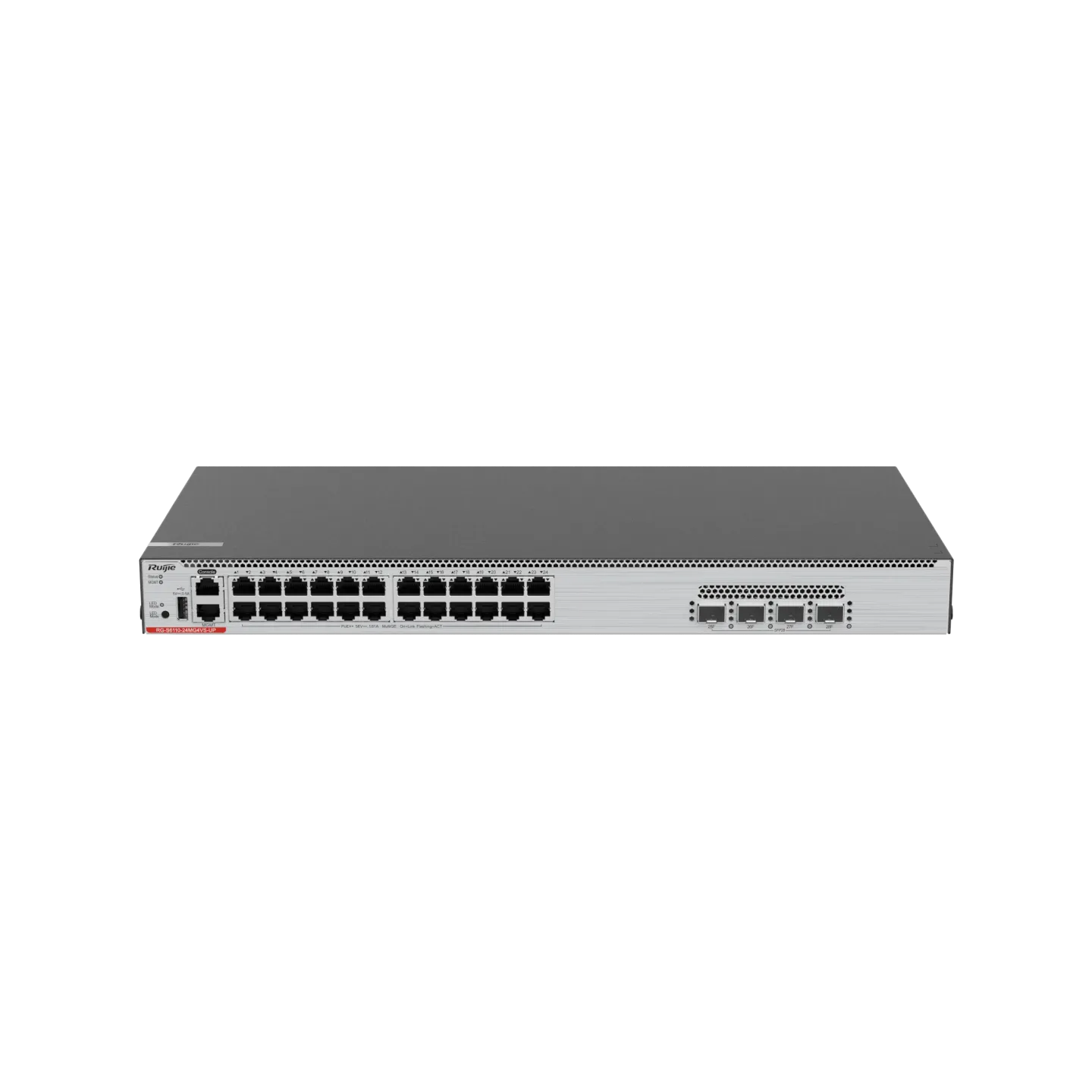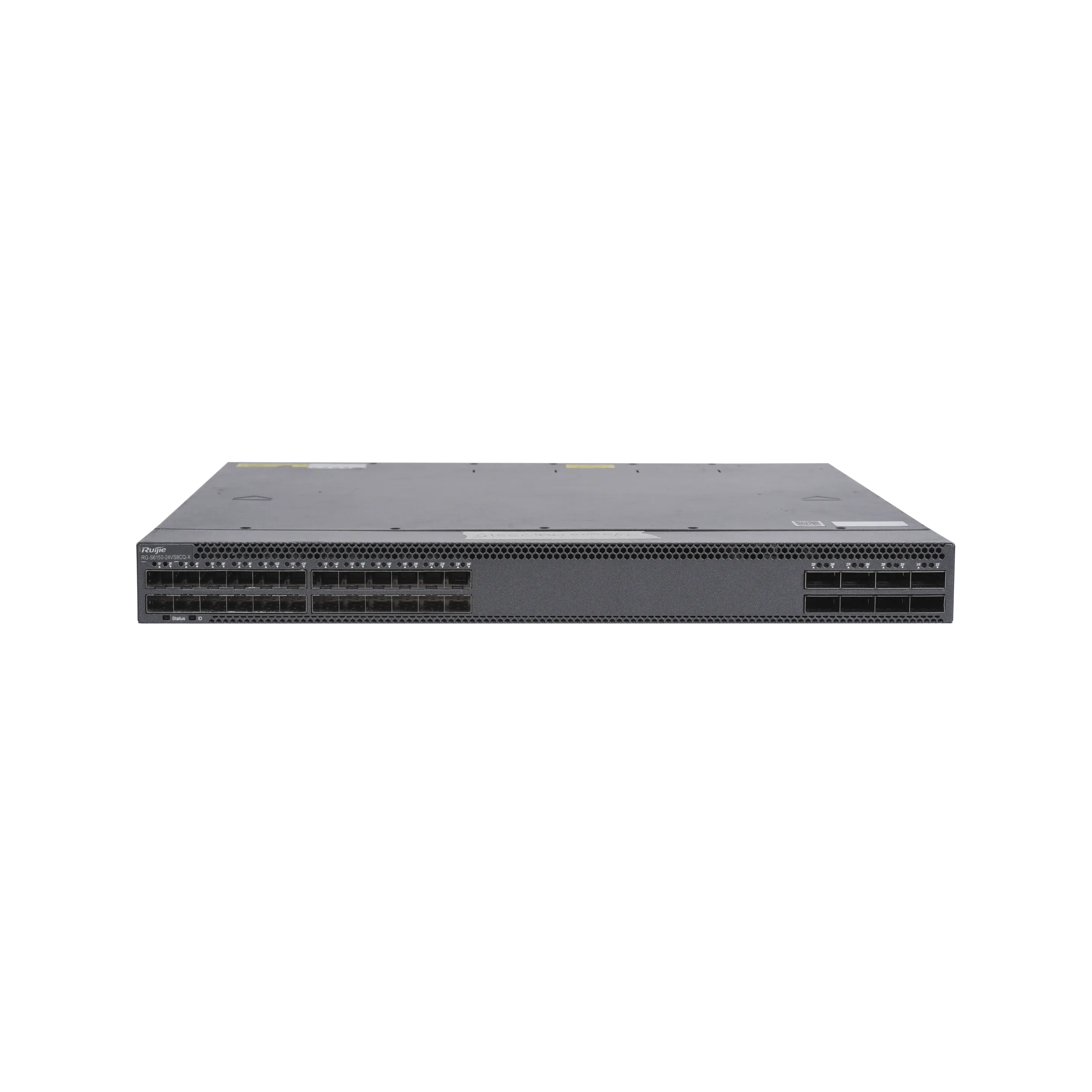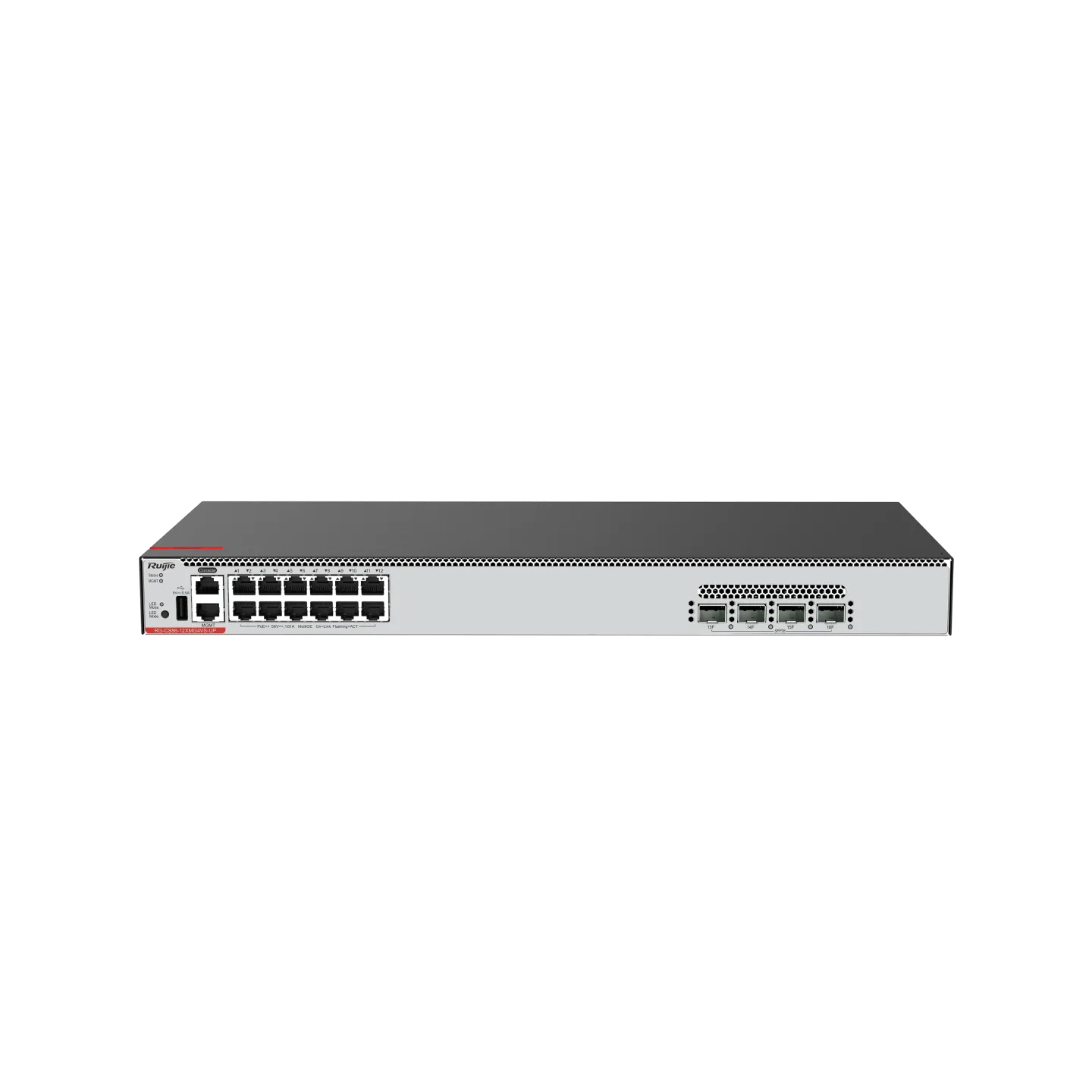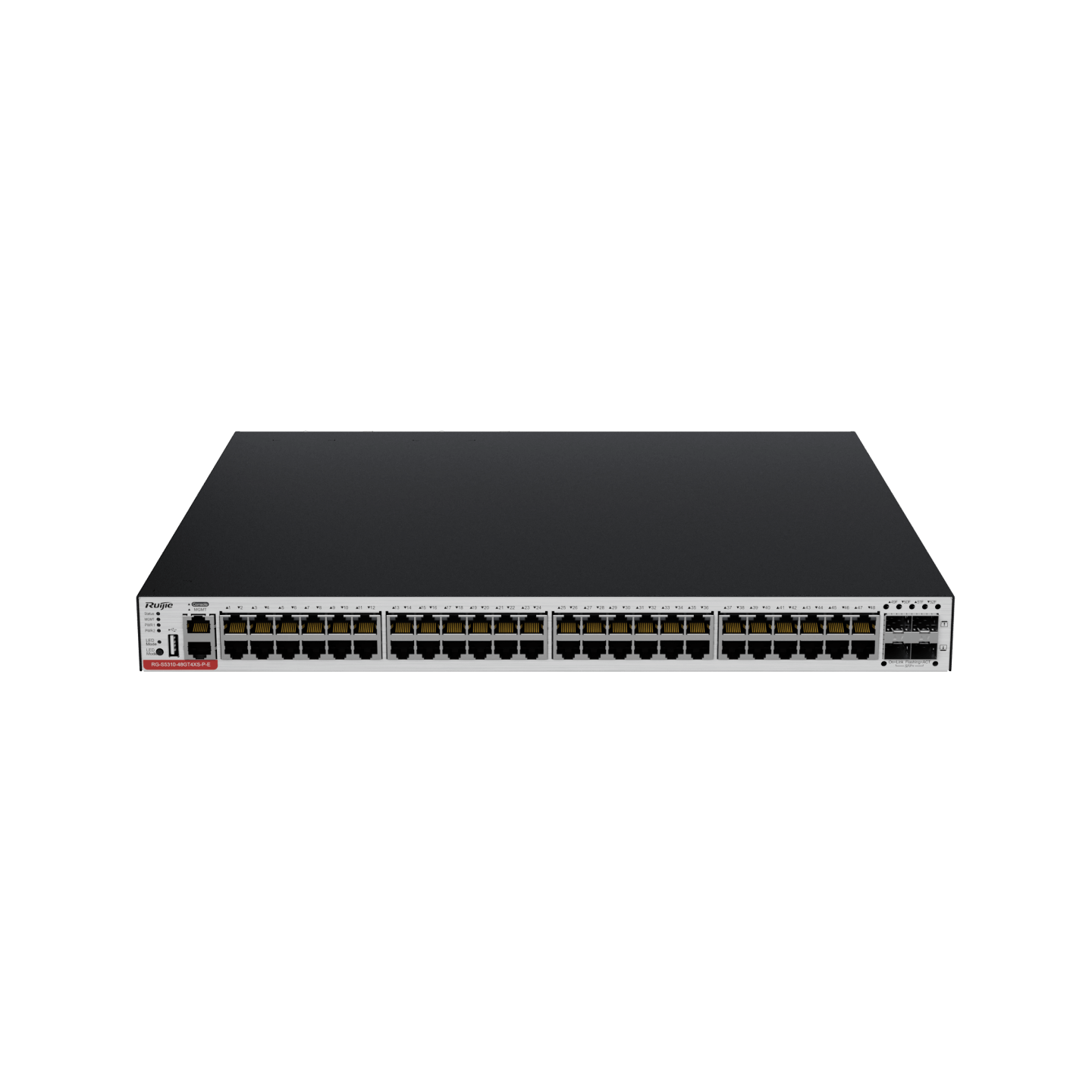As network demands increase with the growth of cloud services, high-definition content, IoT devices, and Wi-Fi 6 adoption, many organizations are finding that their existing 1 Gigabit Ethernet (1G) infrastructure is no longer sufficient. However, upgrading to 10G can be costly and complex, particularly when existing cabling may not support the higher speeds. Multi-gigabit switches present an innovative middle-ground solution, enabling organizations to boost network performance without overhauling their entire infrastructure.
What are Multi-Gigabit Switches?
Multi-gigabit switches are network switches that support multiple data rates—typically 1G, 2.5G, 5G, and 10G—on the same port. Unlike traditional switches that may be limited to a fixed speed (e.g., 1G or 10G), multi-gigabit switches allow for dynamic adjustment of speeds based on the connected device and the quality of the cabling. This flexibility means that businesses can scale their network performance in increments, rather than making a costly jump from 1G to 10G.
These switches are particularly beneficial in environments that have already invested in Cat5e or Cat6 cabling, which can support speeds up to 2.5G and 5G without the need for re-cabling. Multi-gigabit technology leverages advanced signal processing techniques to increase data rates over existing copper infrastructure, thus extending the life of legacy investments while meeting growing bandwidth needs.
Why Are Multi-Gigabit Switches Important?
1. Support for Wi-Fi 6 and Beyond: With the introduction of Wi-Fi 6 (802.11ax), wireless access points can now exceed 1G throughput. A 1G switch port would bottleneck the capabilities of these access points. Multi-gigabit switches ensure that the wired backhaul can match wireless speeds, maximizing the potential of Wi-Fi 6 and future standards.
2. Scalability and Flexibility: Businesses can incrementally upgrade their network speeds to 2.5G or 5G without needing to jump directly to 10G. This flexibility allows for gradual investments as bandwidth needs increase, rather than a one-time massive expense.
3. Cost-Effective: Compared to a full 10G deployment that may require fiber cabling and upgraded equipment, multi-gigabit switches can achieve higher speeds using existing copper cables, significantly reducing infrastructure costs.
4. Future-Proofing: Multi-gigabit switches are well-positioned to handle the continued increase in data demands driven by IoT, 4K/8K streaming, cloud applications, and edge computing. Their ability to support various speeds ensures that networks can grow in line with technological advancements.
When to Deploy Multi-Gigabit Switches?
Multi-gigabit switches are ideal for environments where data demand is growing, but a full upgrade to 10G is not yet necessary or feasible. Specific scenarios include:
●
High-Density Office Environments: Offices with a high concentration of employees relying on cloud applications, video conferencing, and large file transfers benefit from multi-gigabit switches.
● Educational Institutions: Schools and universities deploying Wi-Fi 6 access points across large campuses can use multi-gigabit switches to ensure fast, reliable connections for students and staff.
● Healthcare Facilities: Hospitals and clinics dealing with bandwidth-intensive applications such as medical imaging, electronic health records, and telemedicine can benefit from enhanced speeds without overhauling their entire network infrastructure.
● Small to Medium-Sized Enterprises (SMEs): SMEs looking to improve network performance while controlling costs will find multi-gigabit switches a perfect balance between performance and affordability.
Future Outlook for Multi-Gigabit Switching
The future of multi-gigabit switching is promising, particularly as the demand for bandwidth continues to rise and the cost of fully upgrading to 10G remains prohibitive for many organizations. As the adoption of Wi-Fi 6 and 7 grows, and as more devices become connected to enterprise networks, the flexibility and scalability offered by multi-gigabit switches will become even more valuable.
Furthermore, ongoing advancements in Ethernet technology will likely continue to improve the capabilities of multi-gigabit switches, making them an integral part of network infrastructure strategies for years to come.
In summary, multi-gigabit switches provide a practical, scalable solution for businesses seeking to enhance their network capacity without the need for significant investment in new infrastructure. Their ability to support multiple speeds on existing cabling makes them an attractive option for organizations across various industries as they navigate the demands of modern network environments.
Additional FAQs About Multi-Gigabit Switches
Q: What is the Difference Between a Multi-Gigabit Switch and a Standard Switch?
A: The key difference is the speed flexibility. While standard switches typically support up to 1 Gbps per port, multi-gigabit switches offer multiple speed options (2.5G, 5G, 10G) on the same port, allowing for more bandwidth without changing the cabling infrastructure.
Q: What are the power requirements for multi-gigabit switches?
A: Multi-gigabit switches can have varying power requirements depending on the number of ports and the specific model. Power over Ethernet (PoE) models may require additional power to support connected devices like IP cameras or wireless access points.
Q: How do multi-gigabit switches handle network congestion?
A: Multi-gigabit switches typically come with advanced traffic management features like Quality of Service (QoS) and VLAN support, which help prioritize traffic and manage network congestion more effectively.
Q: Can multi-gigabit switches be used in home networks?
A: Yes, multi-gigabit switches can be used in home networks, especially for homes with high bandwidth needs like streaming 4K video, online gaming, or smart home devices. However, they are more commonly used in business and enterprise environments due to their advanced features and cost.
Q: How does the installation of a multi-gigabit switch differ from a standard switch?
A: The installation process for a multi-gigabit switch is similar to that of a standard switch. However, for advanced features like VLAN configuration or PoE management, additional setup might be required using the switch’s management interface.
Q: What is the difference between managed and unmanaged multi-gigabit switches?
A: Managed multi-gigabit switches allow for greater control over network settings, including traffic management, VLAN configuration, and monitoring. Unmanaged switches, on the other hand, are plug-and-play devices with no advanced configuration options.
Q: Can multi-gigabit switches be integrated into an existing network?
A: Yes, multi-gigabit switches are designed to be compatible with existing networks. They can seamlessly replace older switches, allowing for speed upgrades without requiring changes to the overall network topology or cabling.















